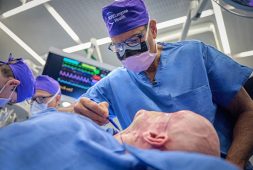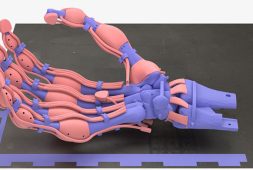
Beneath the ocean’s surface, marine organisms continually emit imperceptible molecules, potentially harboring the future’s medicinal breakthroughs, akin to the multitude of anonymous plants in the vast expanse of the Amazon. Scientists hypothesize that these compounds, hidden beneath the waves, could unlock innovative pharmaceutical solutions.
A research team affiliated with the Mediterranean Institute of Marine and Continental Biodiversity and Ecology has pioneered a proof-of-concept apparatus designed to metaphorically “sniff” seawater. This device captures and concentrates dissolved compounds from the marine environment, setting the stage for comprehensive analysis.
In their explorations, the researchers successfully demonstrated the device’s efficacy in concentrating molecules found in underwater caves. This breakthrough has profound implications, particularly in the realm of drug discovery within delicate ecosystems such as coral reefs. The ability to harness and analyze these elusive compounds opens new avenues for uncovering therapeutic agents and underscores the potential of marine environments as rich sources of pharmaceutical innovation.
“A drop of seawater is like a spoonful of dilute soup: it’s a complex broth of dissolved molecules from ocean-dwelling organisms,” said Doctor Thierry Pérez, the study co-author.
In order to discern the constituents of a mixture, scientists must possess the capability to observe the concentrations of individual molecules in isolation.
Dr. Pérez and his team aimed to devise an underwater apparatus that could capture and concentrate dissolved compounds emitted by marine organisms such as sponges, all while preserving the integrity of the ecosystem. To achieve this, they engineered a waterproof device designed for easy use by underwater divers. This innovative instrument could efficiently pump seawater through disks, resembling the texture and thickness of cosmetic remover pads.
The experimental tool, that they named the In Situ Marine moleculE Logger (I-SMEL), underwent testing in the depths of 65-foot Mediterranean sea caves populated by a variety of large sponges. Subsequent to water sampling, the researchers utilized mass spectrometry to analyze the collected compounds. The compounds exhibited diverse elemental compositions, with many possessing molecular structures that remained unidentified, as detailed in the findings published in the journal ACS Central Science.
This novel approach holds significant promise for the exploration and identification of previously unknown natural products. The researchers discovered various metabolites, including brominated alkaloids and furanoterpenoids, within the seawater sampled from three specific sponge species subject to detailed examination. Intriguingly, notable variations were observed between the compounds extracted from the sponges and those present in the surrounding water.
“For example, aeroplysinin-1 was approximately 20 times more abundant in the extracts from seawater than within a yellow cave-sponge extract,” said Dr. Pérez
The research team asserts that “I-SMEL” offers a non-invasive method when it comes to capturing molecules of interest, enabling insights into the health of an ecosystem or the detection of new molecules for potential drug discovery endeavors.



